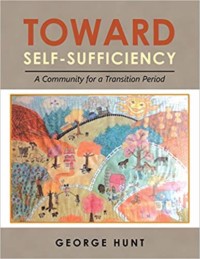Title: Toward Self-Sufficiency: A Community for a Transition Period
Author: George Hunt
Publisher: iUniverse
ISBN: 978-1532059803
Pages: 266
Genre: Political Science and Community Design
Reviewed by: Anthony Avina
Pacific Book Review
 Richard Rogers once wrote, “Architecture is a slow business, and city planning even slower.” Author George Hunt knows this all too well, bringing his years of experience as a city planner into his book, “Toward Self-Sufficiency: A Community for a Transition Period.”
Richard Rogers once wrote, “Architecture is a slow business, and city planning even slower.” Author George Hunt knows this all too well, bringing his years of experience as a city planner into his book, “Toward Self-Sufficiency: A Community for a Transition Period.”
In this book, the author uses his vast knowledge of city planning and tackles topics often overlooked in the field and in these projects. From social and economic hardships in the areas these projects take place in, to environmental concerns and government problems that fail to address important topics that affect our communities (i.e. gun control, global warming, GMO’s in food, etc). The author does a marvelous job of combining his incredible knowledge of the city planning field with the needs of the communities that these projects take place in, using the “pilot project” as an example of examining these community needs and going about integrating them into the project itself.
The author does a great job of outlining the various social needs of the communities involved in the city planning projects. He writes with a command over the subjects being discussed and with a passion that speaks to his desire to see city planning projects become more integrated into the community it’s being built for or a part of.This is the perfect book for anyone with an interest in city planning, design, architecture and community leaders/interested community members who want to learn how to interact with these projects and work together to make something that is sustainable and works well for the community as a whole rather than the individual. As someone who is interested in the social issues raised by the author, it was refreshing to see a former city planner and builder seek a method of addressing these issues so that future generations wouldn’t have to struggle the same way that our current and previous generations had.
This is a must read book for anyone interested in city planning, architecture and social and community building overall. The unique approach to city planning the author took that is meant to help strengthen and build up communities rather than tear them down for the sake of development was an inspired choice, and should encourage a lot of people in the profession to change their approach to these projects in the future. If you haven’t yet grab your copy of this amazing book today!


